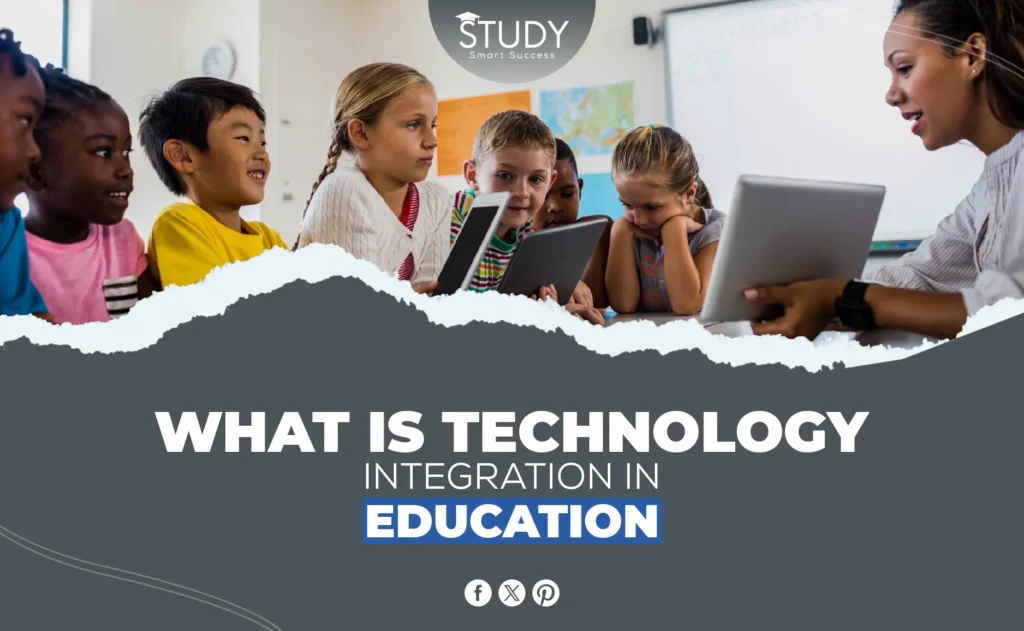Introduction
Using technology in the classroom is becoming a more and more important part of modern schooling. Bringing technology into the classroom can be very helpful for both students and teachers in this day and age when technology is always changing and getting better. Using technology in the classroom has become an important part of shaping the future of education.
It has made students more interested in learning and created new ways for them to work together and be graded. We’ll talk about how teachers are using technology in the classroom to help students learn and make lessons more interesting and important in this blog post.
Read Blog: How Does Technology Affect Education
Defining Technology Integration in Education – An Overview
Being able to use technology in a way that doesn’t stand out in the classroom is called technology integration. It’s not a new idea, but now that the spread is still going on, it’s more important than ever. Kids can be artistic, work together, and be interested when they have control over their learning through technology.
There are many ways to use technology in the classroom, such as through lectures, virtual labs, and online group discussions. But keep in mind that technology integration is more than just being able to use electronics. It means teaching schools how to use technology well, helping kids all the time, and making the internet a safe place to be. As tech keeps getting faster and better, it’s clear that schools will use it in different ways. This will make learning easier and more fun.
Benefits of Integrating Technology in the Classroom
Tech is used in schools all the time and for good reason. It would be strange if it wasn’t, given all the possible rewards. Bringing technology into the classroom can help kids learn better in several ways. For instance, it can make the learning environment more dynamic so that students can take part in fun and interesting activities.
It can also get students to work together, share their thoughts, and figure out solutions. This can help make the classroom more social and engaging, which can help students remember and understand what they are learning better. At the end of the day, using technology in the classroom has many benefits. It can help move the focus from memory to a more interesting and full learning experience.
Strategies for Successful Technology Integration
The world is going digital faster than ever, and teachers need to find ways to use technology in the classroom. But using computers in the classroom isn’t the only thing that makes technology integration work. It includes using technology to help students learn and be more interested, which needs to be carefully planned and carried out.
One good approach is to start small and add technology to activities and lessons bit by bit. Giving teachers and students the right training and help is another important part. Teachers can successfully use these and other methods to bring technology into the classroom and make it a lively place to learn that prepares students for the future.
How to Implement Technology Integration in Different Learning Settings
Today’s world is always changing, and technology is an important part of all of our lives, even school. However, it can be hard to figure out how to use technology in different learning situations. To make sure that the combination works well for both teachers and students, it needs to be carefully planned and thought out.
Teachers must know their student’s needs and preferences to effectively use technology, whether they are teaching in a regular classroom or a virtual one. Adding technology to the learning process can change it, making it more interesting, interactive, and tailored to each student, as long as the right method is taken and the right tools are used.
Examples of Effective Technology Integration Projects
Technology is an important part of our daily lives, especially when it comes to school. Technology is now something that many teachers want to use in their lessons to make learning more dynamic, interesting, and useful. Using virtual reality models to teach science concepts, making multimedia presentations to show off research results, and making digital portfolios as a way to test students are all good examples of how to use technology in the classroom.
These projects not only help students learn more but also get them ready for work in the 21st century by giving them the computer skills they need. Additionally, students become more involved and active in their learning, which eventually leads to better grades.
Challenges and Opportunities with Technology Integration in Education
It’s affecting schooling as technology keeps getting better and more common in our lives. There are some problems, like making sure all the students can use the right technology and tools, but there are also a lot of chances. Technology can get kids interested in learning in new and fun ways, making it more interactive and hands-on. It can also give you access to a lot of information and tools that you couldn’t get before. We can better prepare students for the constantly changing digital world they will face in the future by bringing technology into education in a smart way.
Best Practices for Integrating Technology in the Classroom
Teachers need to use technology in the classroom these days because we live in a digital world. However, it’s important to keep the best ways to do this job in mind. The most important thing is that teachers learn how to use technology well in the classroom. This covers not only the technical parts but also the best ways to teach.
Following that, it is important to pick the correct tech tools for the job. Whether it’s teaching software, interactive whiteboards, or student response systems, teachers should pick tools that are useful for the lesson and will help students learn more. Lastly, teachers should always be aware of possible distractions and make sure that technology use is focused on learning goals. By using these best practices, teachers can successfully use technology in the classroom to make it a more interesting and active place for students to learn.
Conclusion
To sum up, putting technology into schools is not an easy process. Making sure that important projects are carried out well requires careful thought, planning, and help. However there are many good things about using technology in the classroom, and teachers can feel good about how they use technology if they get the right help and training. There will be problems in every project, but if you think about them, each problem can also be turned into a chance.
At the end of the day, the best way to avoid problems and get the most out of all the benefits that using technology in the classroom can bring to both learning and teaching is to follow best practices. Because of this, we encourage our readers to consider how they could use technology to change the way they teach and come up with creative ways to make the classroom a more interesting place for students to learn.
Frequently Asked Questions
Q1: What are some examples of technology integration in the classroom?
Adding technology to the classroom can mean anything from using digital tools for projects and homework to using virtual reality to make learning more engaging. Using online platforms to work together on projects and educational apps to help teach difficult ideas are two other examples.
Q2: What are the benefits of technology integration in education?
Technology integration improves student engagement, personalized learning, and access to previously unavailable resources. It also gives students 21st-century employment digital skills.
Q3: What are some of the challenges associated with technology integration in education?
Some of the problems that need to be solved are making sure that all students have equal access to the technology and tools they need, making sure that teachers get enough training, and dealing with possible distractions in the classroom.
Q4: How can teachers effectively integrate technology into their classrooms?
To begin, teachers can get training on how to use technology in the classroom effectively, covering both the technical and educational elements. It’s also important to pick the right tech tools for the lesson and keep your eye on your learning goals while you use tech.
Q5: How can technology integration transform the learning experience?
Learning may be more dynamic, engaging, and personalized using technology. Real-time resources, peer collaboration, and creative expression are available to students. This improves knowledge, critical thinking, problem-solving, and communication.





